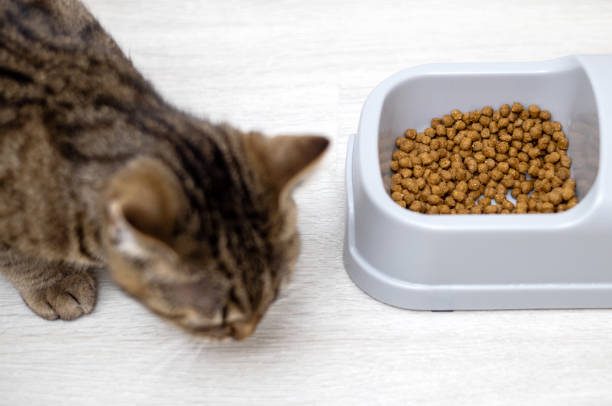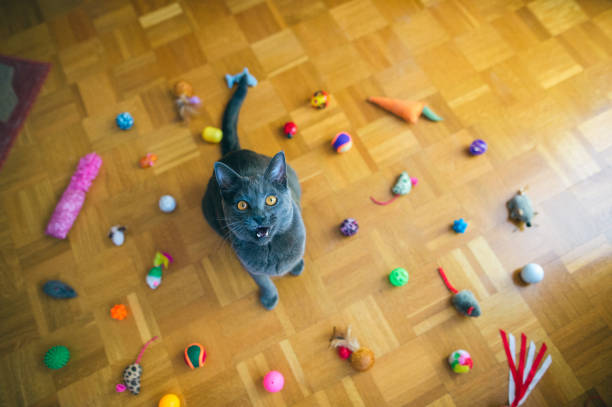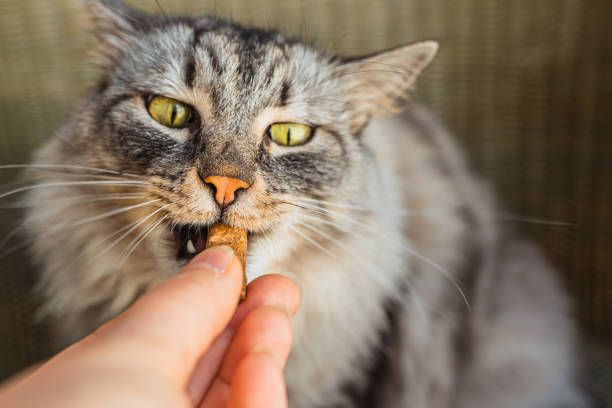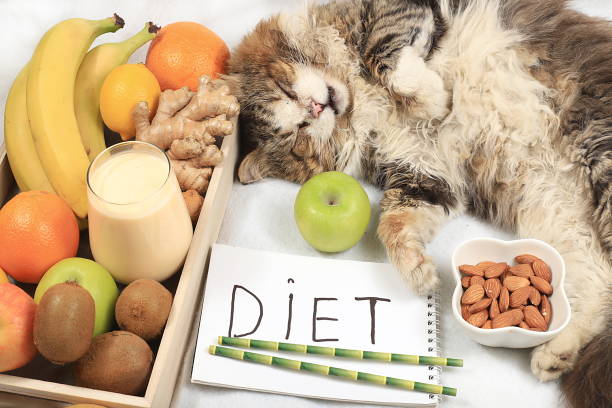Tips For Managing Cat Obesity Through Diet and Exercise
If your cat is overweight, it is important to work with your vet to develop a weight loss strategy. Be sure to weigh your cat weekly and stick to the regiment they recommend.
Consider regulating their food intake by separating them during feeding times, or using an automatic feeder that opens at specific intervals to control their access to calories.
Feeding Schedule
Often, overweight cats are eating too much and not burning enough calories through exercise. Your vet will be able to give you tailored advice on the best way to help your cat lose weight. They will likely recommend a diet that is low in fat, carbs and proteins to promote weight loss and increase the likelihood of maintaining lean muscle mass.
Feeding your cat twice per day rather than leaving food out all the time can encourage meal feeding and decrease the amount of calorie-dense, high-carbohydrate kibble they are consuming. It’s also a good idea to switch from dry kibble to canned foods, which are generally lower in carbohydrates and higher in protein than kibble, making them more appropriate for weight loss.

It is also helpful to encourage your pet to engage in some form of aerobic activity, as this will help them burn calories and increase their metabolic rate, even if the activities are short. This could include playing with toys like laser pointers or wands, chasing ping pong balls or squeaky toys and providing some vertical space for climbing.
If you have a multi-cat household, it’s important to feed the obese cat in a separate room from other cats, as this can help to prevent them from overeating and will limit competition for food. It’s also a good idea not to leave their food out for extended periods of time as this can lead to overeating.
Toys
A chubby cat may be cute, but the health repercussions of excess weight are serious. Over 59% of pet cats are overweight, and that extra fat can lead to osteoarthritis, diabetes, heart disease and liver disease.
Portion control and physical activity are the best ways to manage your cat’s weight. Portion control involves using an accurate measuring cup or gram scale to determine how much food your cat needs for each day. Changing your cat’s feeding habits to scheduled meal times and avoiding calorically dense human treats can help your feline bestie stay at an ideal weight.

Food puzzles and treat balls that release a small amount of food at a time turn meals into games and provide mental and physical stimulation. These toys can also help slow down eating.
Hide your cat’s food in toys or around the house to encourage their natural hunting instincts and get them moving. Toys that dispense kibble or treats are especially helpful for cats that struggle to lose weight as they make them work for their food and burn calories. Rotating toys and introducing new ones can also prevent boredom and keep your feline friend engaged. Just make sure to supervise all toys and ensure they are safe for your cat.
Treats
Overweight cats are at risk for a wide range of health problems, including arthritis, respiratory issues, and heart disease. Getting your cat back to their ideal body condition can help protect them from these problems and lead to a longer, healthier life.
The primary reason that any animal gains weight is by consuming more energy than they expend. This can occur due to excessive dietary calories (food and treats) or reduced activity resulting from illness, injury, or other factors. It is particularly important to ensure that indoor cats receive adequate amounts of daily physical and mental exercise.

Providing toys that encourage play and limiting table scraps can make an enormous difference in your cat’s ability to lose weight. Avoid giving your cat round-the-clock access to food, which can lead to overeating, and consider replacing their traditional bowl with a food puzzle feeder or hiding their food in open boxes that are difficult for them to reach.
You can also stimulate your cat’s environment with activities like climbing towers, and try to get them moving by placing their food and litter box in different locations each day, so they have to search for them. With patience and a well-guided program, you can help your overweight cat improve their health and quality of life. Be sure to consult with your veterinarian before starting any diet or exercise programs.
Exercise
For the average house cat, the most effective way to reduce weight is with diet and exercise. Having a healthy diet that is low in calories is the first step, and working with your vet to develop a plan of action for your pet is important. They may suggest altering your pet’s current food, or even prescribing a specialized diet designed to help them lose weight.
Many cats that are overweight are also underactive, which limits their ability to burn calories. Often, this can be due to health problems like arthritis that cause your cat to become lazy, or because they’re used to hunting for their food outdoors and haven’t been engaging in the same activity inside as much.
Try putting their food in smaller cups to decrease their calorie intake, and use small, regular feeding times instead of free-choice feeding (following your vet’s instructions). In addition to reducing calories, exercise can be beneficial for a cat that is overweight. Increased playtime with their human and using toys that stimulate mental activity (like puzzle feeders) can get your cat moving and expend energy. Regular weigh-ins and vet visits are also essential to monitor your pet’s progress and keep them motivated.

